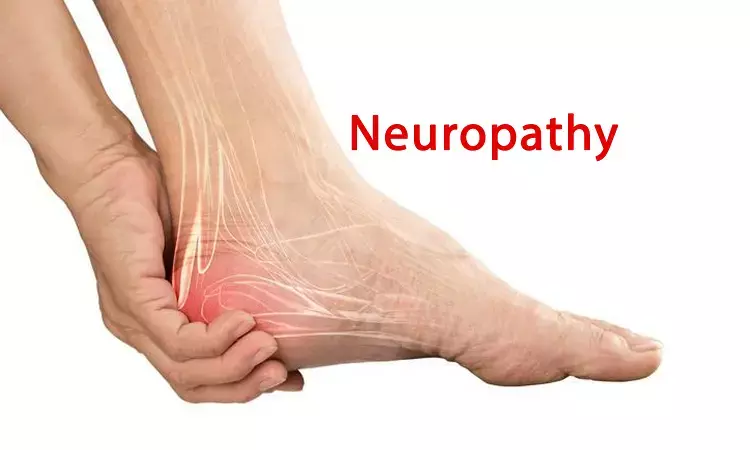- Home
- Medical news & Guidelines
- Anesthesiology
- Cardiology and CTVS
- Critical Care
- Dentistry
- Dermatology
- Diabetes and Endocrinology
- ENT
- Gastroenterology
- Medicine
- Nephrology
- Neurology
- Obstretics-Gynaecology
- Oncology
- Ophthalmology
- Orthopaedics
- Pediatrics-Neonatology
- Psychiatry
- Pulmonology
- Radiology
- Surgery
- Urology
- Laboratory Medicine
- Diet
- Nursing
- Paramedical
- Physiotherapy
- Health news
- Fact Check
- Bone Health Fact Check
- Brain Health Fact Check
- Cancer Related Fact Check
- Child Care Fact Check
- Dental and oral health fact check
- Diabetes and metabolic health fact check
- Diet and Nutrition Fact Check
- Eye and ENT Care Fact Check
- Fitness fact check
- Gut health fact check
- Heart health fact check
- Kidney health fact check
- Medical education fact check
- Men's health fact check
- Respiratory fact check
- Skin and hair care fact check
- Vaccine and Immunization fact check
- Women's health fact check
- AYUSH
- State News
- Andaman and Nicobar Islands
- Andhra Pradesh
- Arunachal Pradesh
- Assam
- Bihar
- Chandigarh
- Chattisgarh
- Dadra and Nagar Haveli
- Daman and Diu
- Delhi
- Goa
- Gujarat
- Haryana
- Himachal Pradesh
- Jammu & Kashmir
- Jharkhand
- Karnataka
- Kerala
- Ladakh
- Lakshadweep
- Madhya Pradesh
- Maharashtra
- Manipur
- Meghalaya
- Mizoram
- Nagaland
- Odisha
- Puducherry
- Punjab
- Rajasthan
- Sikkim
- Tamil Nadu
- Telangana
- Tripura
- Uttar Pradesh
- Uttrakhand
- West Bengal
- Medical Education
- Industry
AAN Issues Guideline for Treatment of Painful Diabetic Neuropathy

MINNEAPOLIS - Diabetic neuropathy refers to nerve damage due to diabetes and it may lead to pain and numbness, most often in the hands and feet. To help neurologists and other doctors determine the best treatment for people with diabetic neuropathy, the American Academy of Neurology (AAN) has issued a guideline on oral and topical treatments for painful diabetic neuropathy.
The guideline is published in the December 27, 2021, online issue of Neurology®, the medical journal of the AAN, and is endorsed by the American Association of Neuromuscular & Electrodiagnostic Medicine. This guideline updates the 2011 AAN guideline on the treatment of painful diabetic neuropathy.
"Living with pain can greatly affect a person's quality of life, so this guideline aims to help neurologists and other doctors provide the highest quality patient care based on the latest evidence," said guideline author Brian C. Callaghan, MD, MS, of the University of Michigan in Ann Arbor and a Fellow of the American Academy of Neurology. "Painful diabetic neuropathy is very common, so people with diabetes who have nerve pain should discuss it with their doctor because treatment may help."
The guideline states that there are many oral and topical medications that are effective in reducing nerve pain. Before prescribing a treatment, it says a doctor should first determine if a person also has mood or sleep problems since treatment for these conditions is also important.
To reduce nerve pain, the guideline recommends that doctors may offer treatments from the following drug classes: tricyclic antidepressants (TCAs) such as amitriptyline, nortriptyline and imipramine; serotonin-norepinephrine reuptake inhibitors (SNRIs) such as duloxetine, venlafaxine or desvenlafaxine; gabapentinoids such as gabapentin or pregabalin; and/or sodium channel blockers such as carbamazepine, oxcarbazepine, lamotrigine, or lacosamide. Evidence shows these medications may all reduce nerve pain.
"New studies on sodium channel blockers published since the last guideline have resulted in these drugs now being recommended and considered as effective at providing pain relief as the other drug classes recommended in this guideline," said Callaghan.
When prescribing, the guideline says doctors should consider the cost of a drug, side effects as well as other medical problems the person may have. Once taking a drug, people should be checked by their doctors to determine if there is enough pain relief or too many side effects.
If the first medication tried does not provide meaningful improvement, or if there are significant side effects, the guideline states that doctors should offer patients a trial of another medication from a different class.
The guideline states that opioids should not be considered for treatment.
"Current evidence suggests that the risks of the use of opioids for painful diabetic neuropathy therapy outweigh the benefits, so they should not be prescribed," said Callaghan.
The guideline states that doctors may offer topical treatments such as capsaicin, glyceryl trinitrate spray or Citrullus colocynthis to reduce pain. It also says ginkgo biloba may be helpful, as well as non-drug treatments such as exercise, mindfulness, cognitive behavioral therapy or tai chi.
"It is important to note that the recommended drugs and topical treatments in this guideline may not eliminate pain, but they have been shown to reduce pain," said Callaghan. "The good news is there are many treatment options for painful diabetic neuropathy, so a treatment plan can be tailored specifically to each person living with this condition."
Hina Zahid Joined Medical Dialogue in 2017 with a passion to work as a Reporter. She coordinates with various national and international journals and association and covers all the stories related to Medical guidelines, Medical Journals, rare medical surgeries as well as all the updates in the medical field. Email: editorial@medicaldialogues.in. Contact no. 011-43720751
Dr Kamal Kant Kohli-MBBS, DTCD- a chest specialist with more than 30 years of practice and a flair for writing clinical articles, Dr Kamal Kant Kohli joined Medical Dialogues as a Chief Editor of Medical News. Besides writing articles, as an editor, he proofreads and verifies all the medical content published on Medical Dialogues including those coming from journals, studies,medical conferences,guidelines etc. Email: drkohli@medicaldialogues.in. Contact no. 011-43720751


